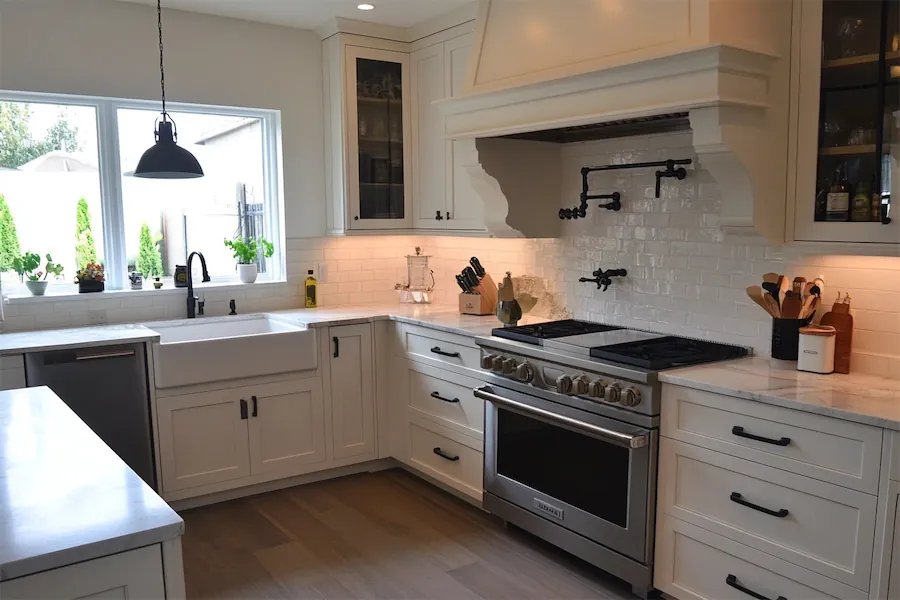A Spanish Revival kitchen captures the warmth and charm of early 20th-century Spanish Colonial architecture, blending traditional elements with modern functionality. This article explores the history, key features, applications, and considerations for designing a Spanish Revival kitchen.
History and Origins of Spanish Revival Kitchens
Spanish Revival architecture, also known as Spanish Colonial Revival, gained popularity in the United States during the late 19th and early 20th centuries, particularly in California and Florida. This architectural style drew inspiration from the early Spanish colonial structures, characterized by stucco walls, red-tiled roofs, and ornamental details. The style’s bright stucco walls and red tile roofs have a distinctly Mediterranean flair that seems appropriate for the style’s Southern California origins.
Key Features of Spanish Revival Kitchens
- Warm, Distressed Cabinets: Utilizing distressed wood cabinetry in warm tones adds rustic charm and authenticity to the kitchen.
- Decorative Tilework: Incorporating colorful, hand-painted tiles for backsplashes and countertops introduces vibrant patterns and textures, enhancing the kitchen’s visual appeal.
- Wrought Iron Accents: Elements such as wrought iron light fixtures, cabinet hardware, and pot racks contribute to the traditional Spanish aesthetic.
- Arched Doorways and Niches: Incorporating arches and alcoves adds architectural interest and reflects traditional Spanish architecture.
- Exposed Wood Beams: Ceilings featuring exposed wooden beams provide a rustic and authentic touch, enhancing the old-world ambiance.
Applications of Spanish Revival Kitchens
- Residential Homes: Incorporating Spanish Revival design elements can transform a standard kitchen into a warm and inviting space, enhancing the overall aesthetic appeal.
- Historic Renovations: Restoring older homes to their original Spanish Revival style can preserve architectural heritage while providing modern functionality.
- Themed Restaurants: Designing kitchens in Spanish-themed restaurants that reflect traditional architecture can provide an authentic culinary experience for patrons.
Considerations When Designing a Spanish Revival Kitchen
- Material Selection: Choose authentic materials such as natural stone, wood, and hand-painted tiles to maintain cultural authenticity and environmental harmony.
- Integration of Modern Amenities: While preserving traditional aesthetics, ensure the kitchen meets contemporary standards of functionality and convenience, such as incorporating modern appliances discreetly.
- Lighting: Incorporate both natural and artificial lighting to highlight architectural features and create a warm, inviting atmosphere.
- Cultural Sensitivity: Respect the historical and cultural significance of Spanish Revival design principles, ensuring that adaptations honor traditional architecture and practices.
Conclusion
A Spanish Revival kitchen offers a harmonious blend of historical charm and modern functionality. By embracing the key features and design principles of Spanish Revival architecture, one can create a kitchen space that is both aesthetically pleasing and practical, reflecting the timeless beauty of this architectural style.
